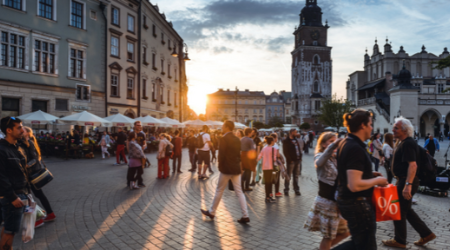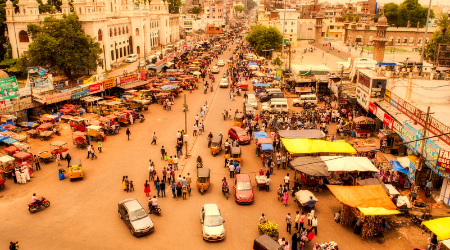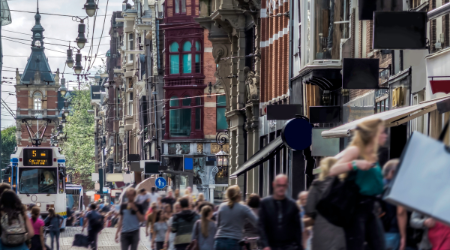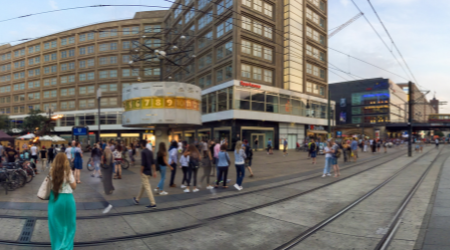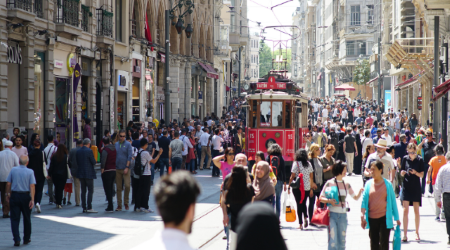War in Ukraine: A View from Romania
I was born and raised in the eastern part of Romania, in Suceava, a beautiful county that borders Ukraine to the north and to this day, a home for many Ukrainian families. I moved out of my parent’s home at 18 for university in Cluj-Napoca, 400 km away in Transylvania, in western Romania. I obtained my degree in Informatics applied to Economics, but soon left for Ireland and later Belgium in search of a better life and opportunities, a trend for my generation. I still have some relatives in the area. My father still lives in Romania, while my mother left 20 years ago—part of a wave of migration toward Western Europe after Romania joined the EU.
The war in Ukraine brings up chilling memories for Romanians as they recall the difficulties they faced in the pre-1989 Communist period. On the first day of the war, my father, who lives in Suceava, noticed many incoming vehicles with Ukrainian license plates and in the days following, many more families arriving in the city. It was impossible for him to disassociate the crisis that was unfolding with the Communist era, and he started to recall the stories that I grew up with and had heard over and over again from my parents, relatives and their friends: memories of long queues at 4:00 a.m. to secure butter or on other days, a piece of meat that my parents would keep only for me as a child to eat.
Even as more images and videos from the devastation in Ukraine are on TV or in social media, Romanians relate to the day-to-day life of Ukrainians before the war. The cities look very similar, with rows of grey apartment blocks, each home to many families. The museums, theaters, historical buildings and even the trains look familiar. It’s impossible not to offer a helping hand to all the women, men and children running away from this nightmare as we watch the bombardments and destruction. We imagine a similar scenario for Romania, and I fear for my family, too.
How is Romania is reacting to the war in Ukraine?
The invasion on February 24 came as a shock. The entire country felt paralyzed, and many businesses started drafting plans or activating plans for what to do if the conflict expands and reaches Romania's borders. After the initial shock, the general population and NGOs, many that were at the border from day one of the conflict, reacted admirably and mobilized to offer support to the hundreds of thousands of Ukrainian refugees that fled to Romania. Dozens of groups organized on social media to collect donations, food, and essential supplies, or to find temporary accommodation for people transiting Romania. We have 600 km of border with Ukraine and four to five major crossing points which saw major increases in traffic. Authorities were initially slow to react to provide support for refugees, but in the following one to two weeks, they provided the infrastructure needed to welcome and host refugees. Fortunately, the overall attitude towards refugees and the public and private response has been great. There were a few hiccups at first, but now the system feels stabilized and there are adequate resources being allocated to provide shelter and food to Ukrainians in Romania.
Currently (April 15 data) more than 700,000 refugees from Ukraine are in Romania, 15 percent of the total since the start of the war. The government is providing subsidies to NGOs offering food and shelter (120 lei per day pr refugee, approximately 24 euros or 26 dollars) to the small percentage of refugees remaining in the country (with 80 percent transiting Romania). NGOs offered emergency support while the authorities organized and provided longer term shelters. Currently, the situation feels completely under control and there are several initiatives to support the integration of families that wish to remain in Romania and need to find jobs and long-term accommodation.
Romania is already a member of NATO and the EU, and the population was one of the most pro-western in Europe even before the war in Ukraine, so I don't expect any change of attitude. The lasting impact will likely be an increase in the defense budget. It had grown to two percent of GDP in the past three to four years, and for this year it increased to 2.5 percent, a significant expense considering that the country has been running large deficits since 2018 (more than five percent every year). At the same time, I perceive widespread anti-Russia sentiment, reflecting a general anger at Russia. The country has been invaded 13 times by Russian troops since 1711. There are some exceptions in the media from outlets with a very limited audience.
The debate on importing Russian gas is less heated than in neighboring countries. Luckily, Romania has significant natural gas resources, and a large portion of domestic consumption is supplied by local companies. However, there are concerns that foreign investment will drop as a result of the war at the border. Economic growth is also expected to suffer. The Conference Board has recently revised downward economic growth estimates for 2022: from 4.9 to 2.8 percent. At the same time, the Romanian National Bank reports that year-on-year inflation is at an 18-year high of 10.2 percent (March) significantly affecting the purchasing power of households.







